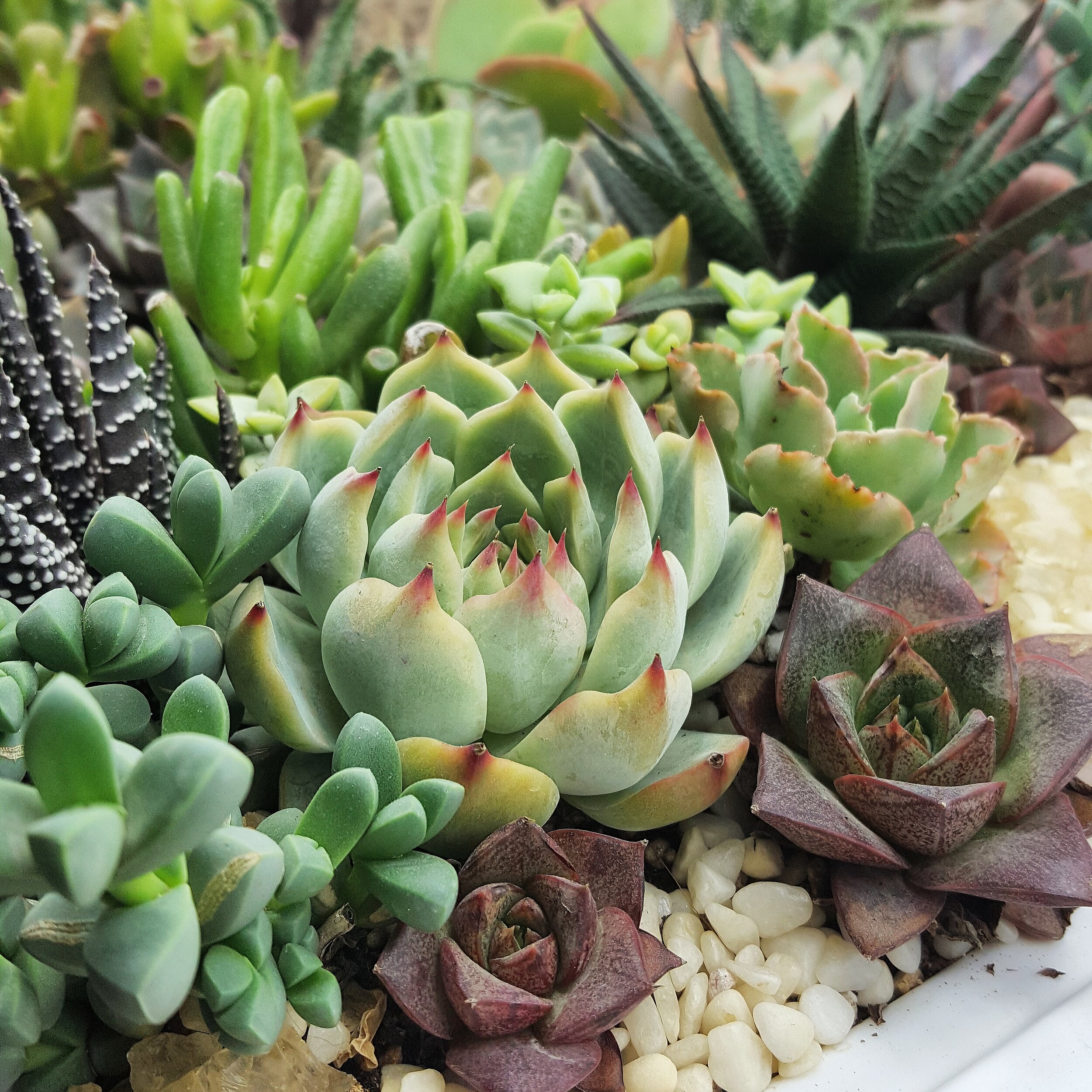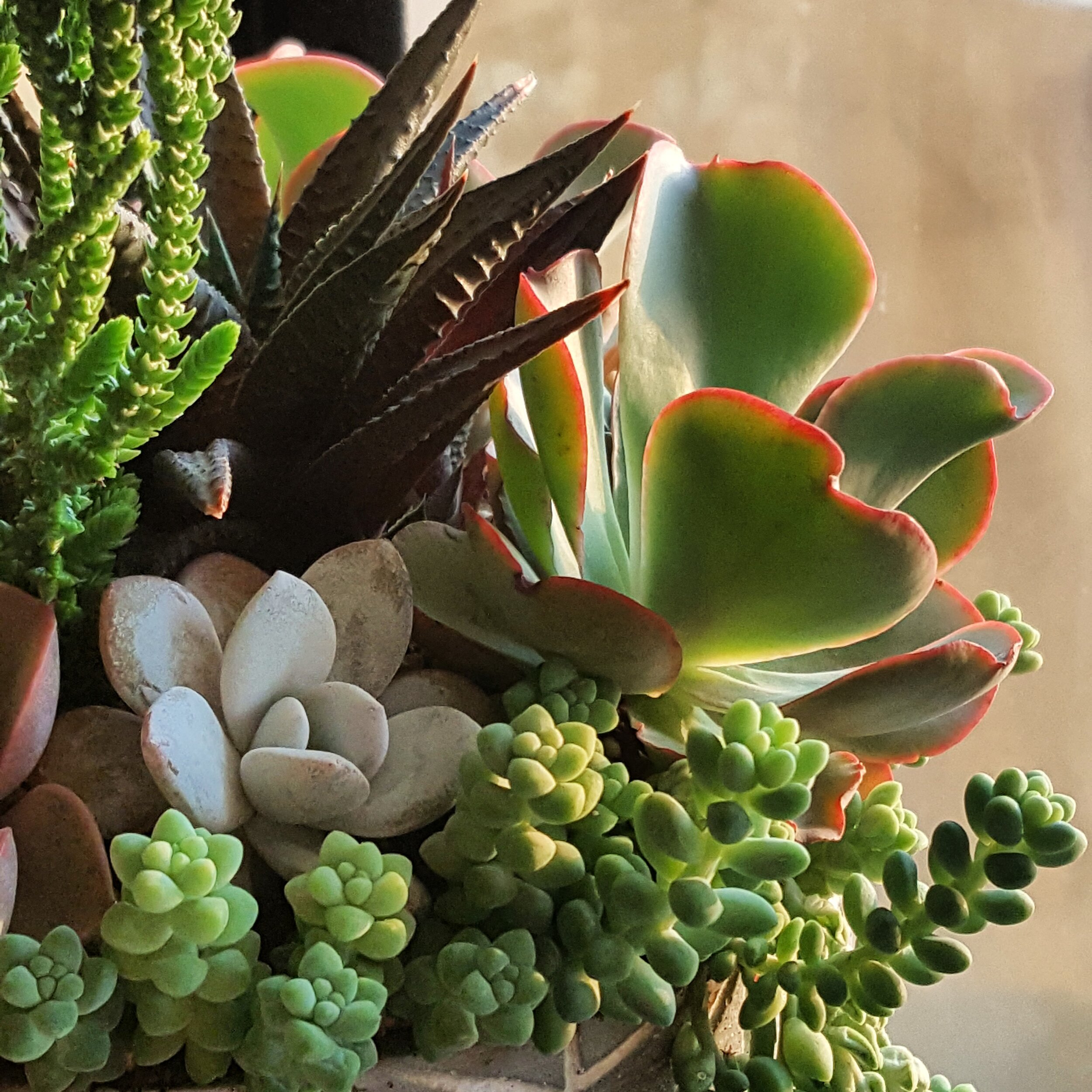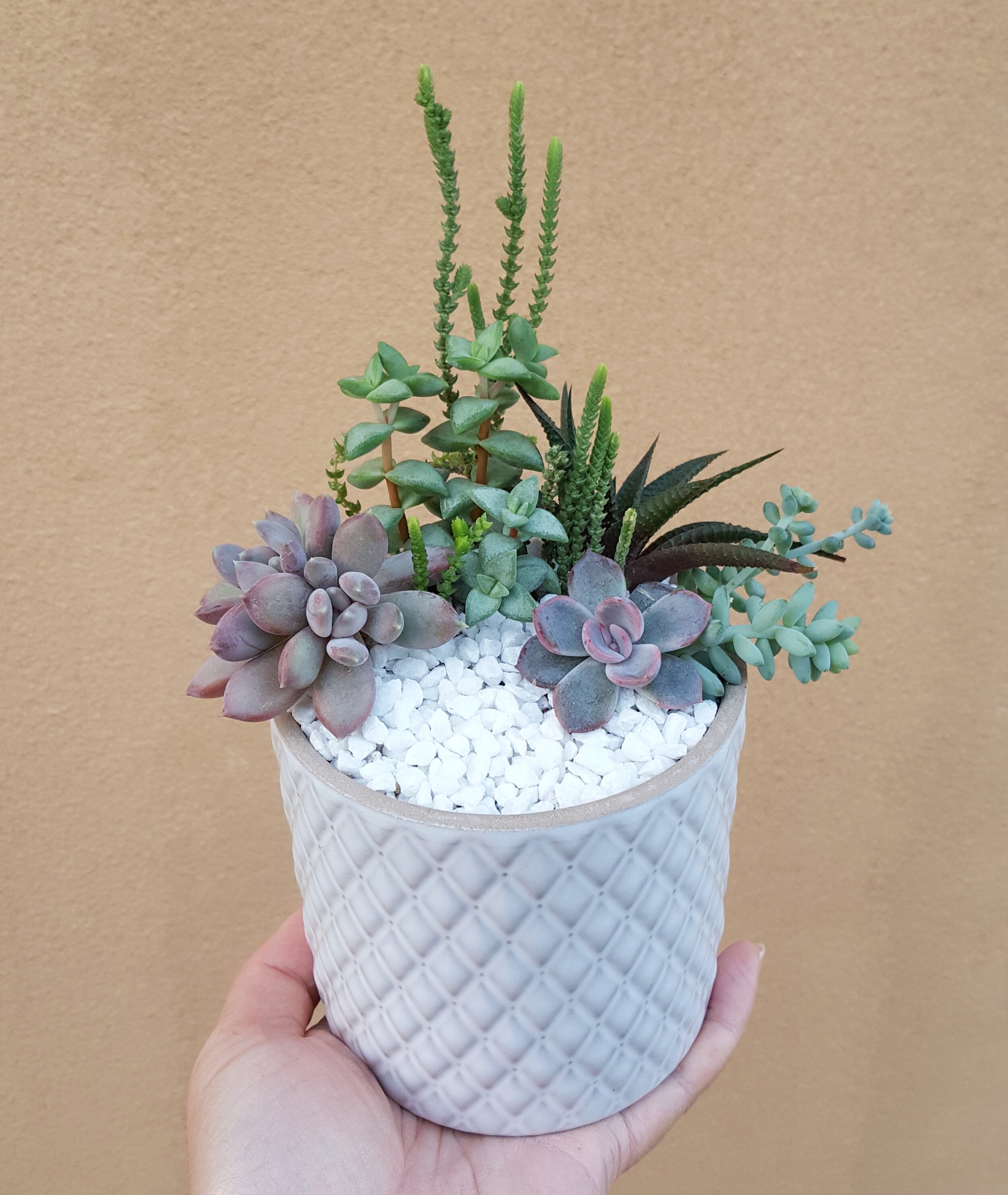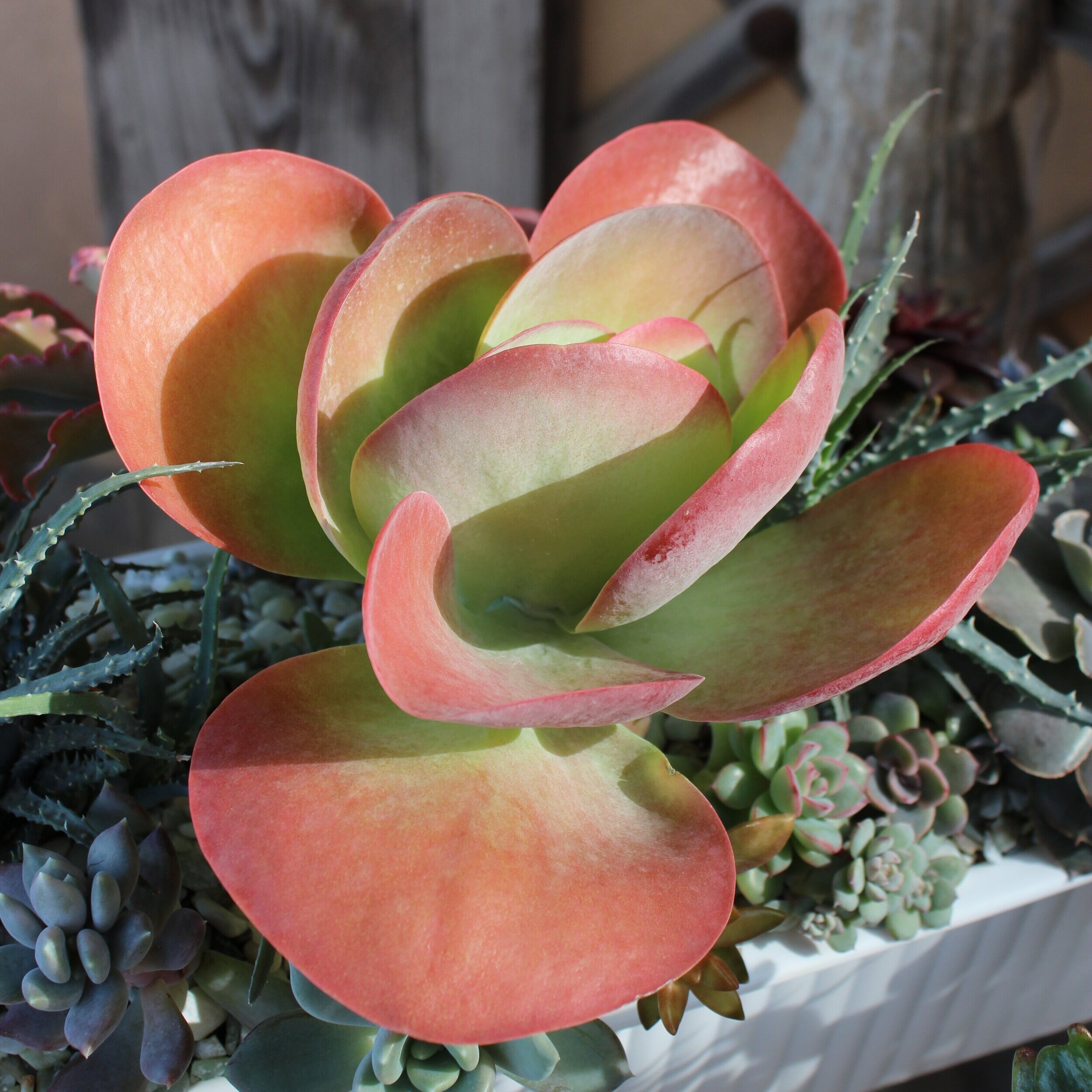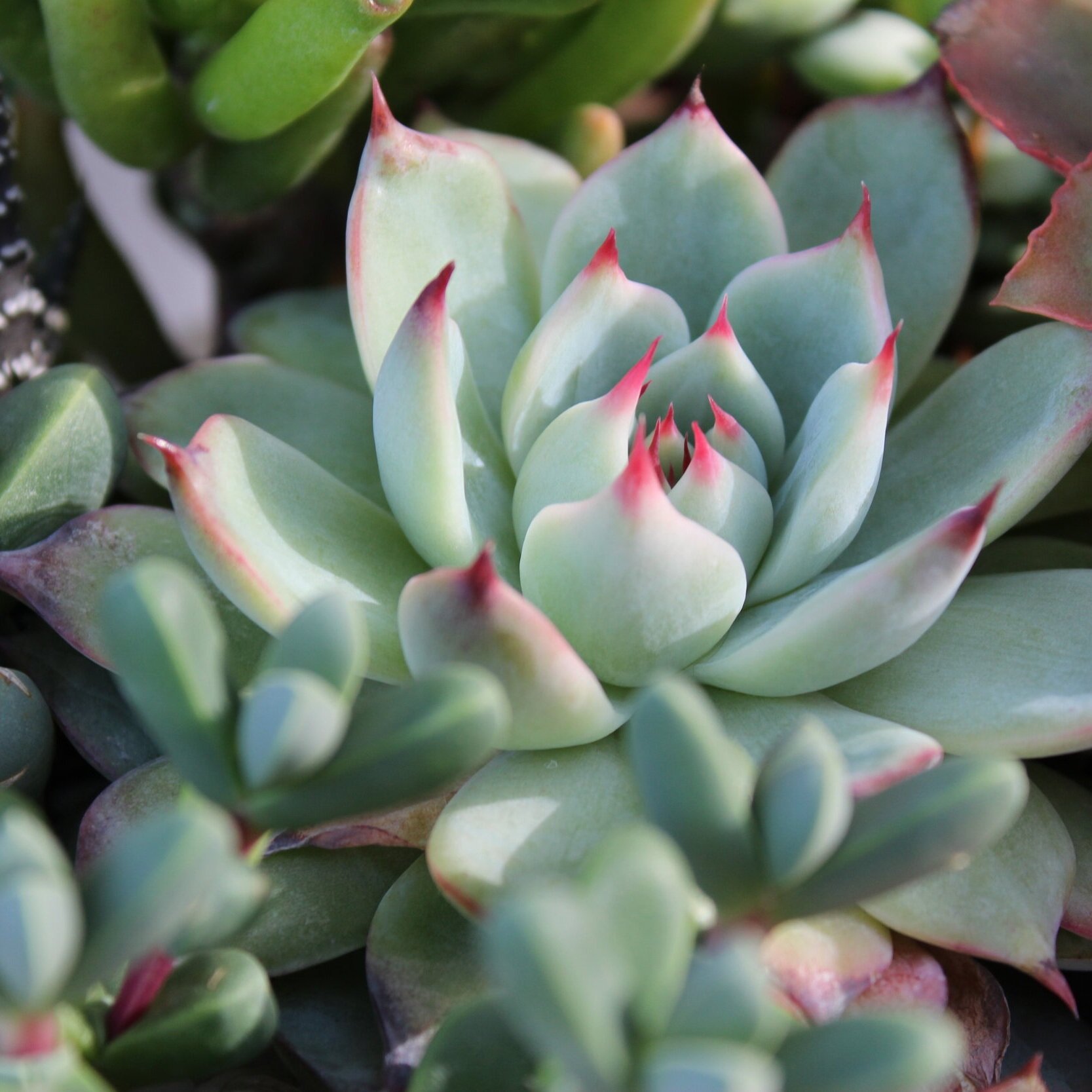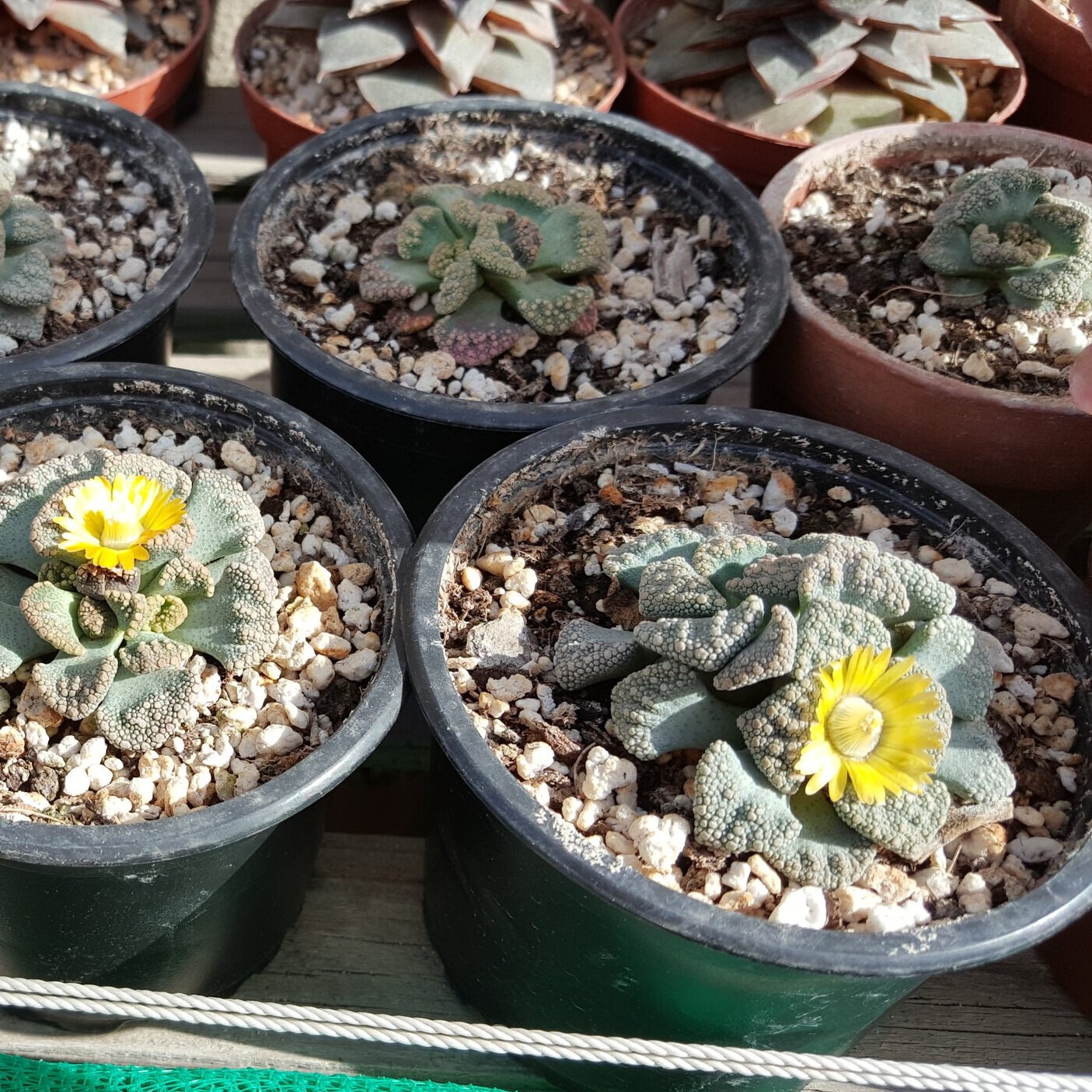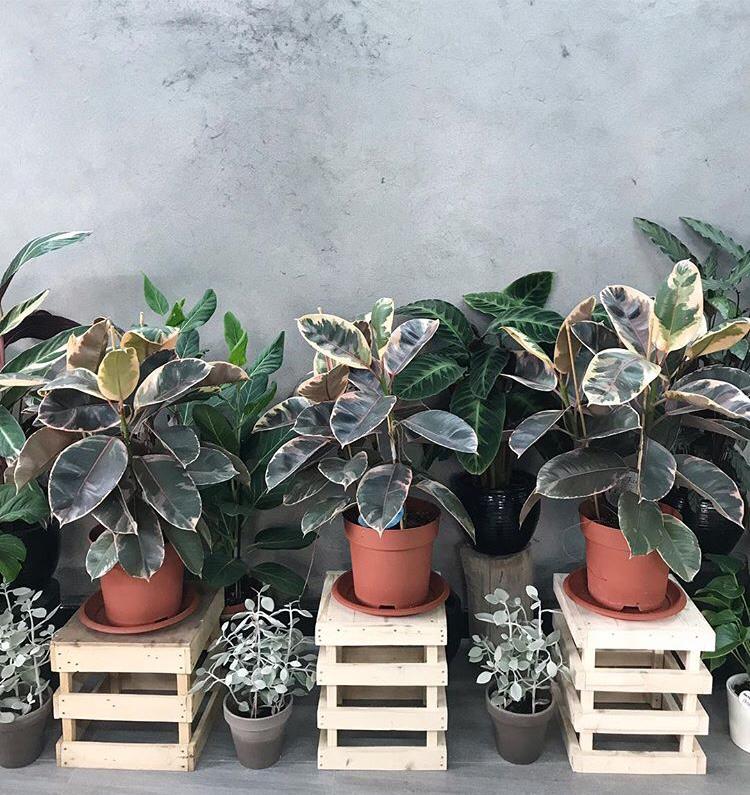SF Friends! We’re here to introduce our newest collaboration with Xenia Cueto the face behind the IG handle @Xenia.Succulents. Xenia cultivates and grows all of her succulents locally in Bahrain and we’re so glad to be able to offer her a platform to share her beautiful creations with you.
Xenia’s succulent plants and planters are truly one-of-a-kind and her passion for these pudgy plants is infectious! We will be carrying a rotating variety of Xenia’s succulent planters in store, so do pop on in check out these stunners out!
A little bit more about Xenia,
her passion, and some tips on
succulent care. Enjoy!
Tell us a bit more about how you got started with these juicy plants…
My journey started in 2016 when I got my first succulent a Crasulla Ovata Minima. I didn’t really know how to care for my first baby and it died on me right away! In an effort to understand what I needed to do to successfully own a succulent, I found Instagram and that changed everything! I saw so many beautiful succulents being cultivated and was obsessed. I had to have them all! I scoured the market for any and every succulent I could find and with some trial and error, and help from online experts, I started my own little collection.
Do you have a favourite?
That’s like asking a mother to name her favorite child! Impossible!! I love all my babies…each and everyone has a special place for me.
We promise won’t tell the other guys if you name your favorite!
Alright there a few favorites for various reasons… I love the Kalanchoe Thyrsiflora (aka Flapjacks, see they even have adorable nicknames!) because it is a strong and prolific succulent—it grows year round, has stunning colouration when stressed, and is easy to care for. The rosette-types succulents like the Echeverias and Graptoverias are a classic favourite because of their beautiful shape. By far the most interesting succulents are the Mimicry succulents because of their unique pudgy shapes. And Mesembs succulents like Baby Toes and Titanopsis Calcareaum almost look like they're from another planet. I told you I couldn’t pick just one!
Some of Xenia’s Faves
Any tips for caring for succulents?
It is a misconception that all succulents are the same and need the same care. You should monitor your plant’s environment and what it needs for optimal care.
I Cover Detailed Care for
Specific Varieties on my
Instagram Feed
@Xenia.Succulents
Succulent Care
In general succulents like bright filtered light, cool temperatures, good ventilation, and infrequent waterings.
Ideally, we’re looking to mimic the succulent’s native habitat which is generally sunny, cool,
and dry.
Light & Temperature
Bright Filtered Light
Cool-to-Moderate Temperatures (8 to 25°C), Never Hot!
Light and Temperature
When placing your succulent you want to locate it in a bright spot with filtered light, either from a natural source or from a light source like a desk lamp. Succulents can actually tolerate a wide variance in temperature ranging from 8 to 25°C. However, contrary to popular belief, these are not hot desert plants and they cannot tolerate being outside in Bahrain’s summer heat! In Bahrain, succulents can thrive outdoors only during our cooler winter months from December to April, beyond this you should move your plants babies indoors.
If you’re placing your succulents outside you should consider a trellis or a net shade so that your plants have sufficient shade from the strong mid-day sun—you don’t want to burn them!
Ventilation
Well Ventilated to Mimic Arid Desert Conditions
Non-Humid Locations are Best
Good Air Circulation
This is very important for succulents as it helps the plant’s soil dry out completely between waterings. A humid location such as a bathroom or kitchen might not be the most ideal spot for a succulent.
Water
Water Sparingly, when Soil is Completely Dry
When in Doubt DO NOT Water!
The Perennial Qn: When to Water!
You should only water your succulent when the soil is completely dry. I like to do the lift test—I will lift up my succulent pot and if it feels significantly lighter I know that all the water in the soil has been absorbed and the plant is ready to be watered. When watering your plant make sure not to let water collect on the leaves at all—if left in direct light with water on the leaves you might give your plant a permanent sunburn.
Watering Techniques and Frequency
Small Arrangements:
I like to using a small syringe to feed a little water near the base of each plant. I typically do about 20ml for each small succulent in a planter. Do not use a hypodermic needle (i.e. sharp needle)! You don’t want to skewer your succulent!! You could also invest in a watering can with a small, precise, spout. I would water about every 2 weeks.
Planters with Drainage Holes:
If your succulent planter has a drainage hole you can water the plant till water drains out but never ever let the plant sit in standing water. Only re-water when the planter feels light or when you can tell the soil is completely dry.
Planters with No Drainage Holes:
In this situation less is always more. In general you would give the plant water equal to 1/3 the volume of the pot. Yes you can eyeball it, but this is why less is more. Better to slightly underwater than let the water pool at the bottom of the plant’s pot as a result of overwatering.
When in Doubt Do Not Water!
Under-watering won’t kill your succulents, they might shrivel up a bit but some water and TLC will plump them right back up
Overwatering will likely cause root rot that will definitely kill your plants!
I hope these guidelines help demystify these beautiful, pudgy plants!
~ Xenia


